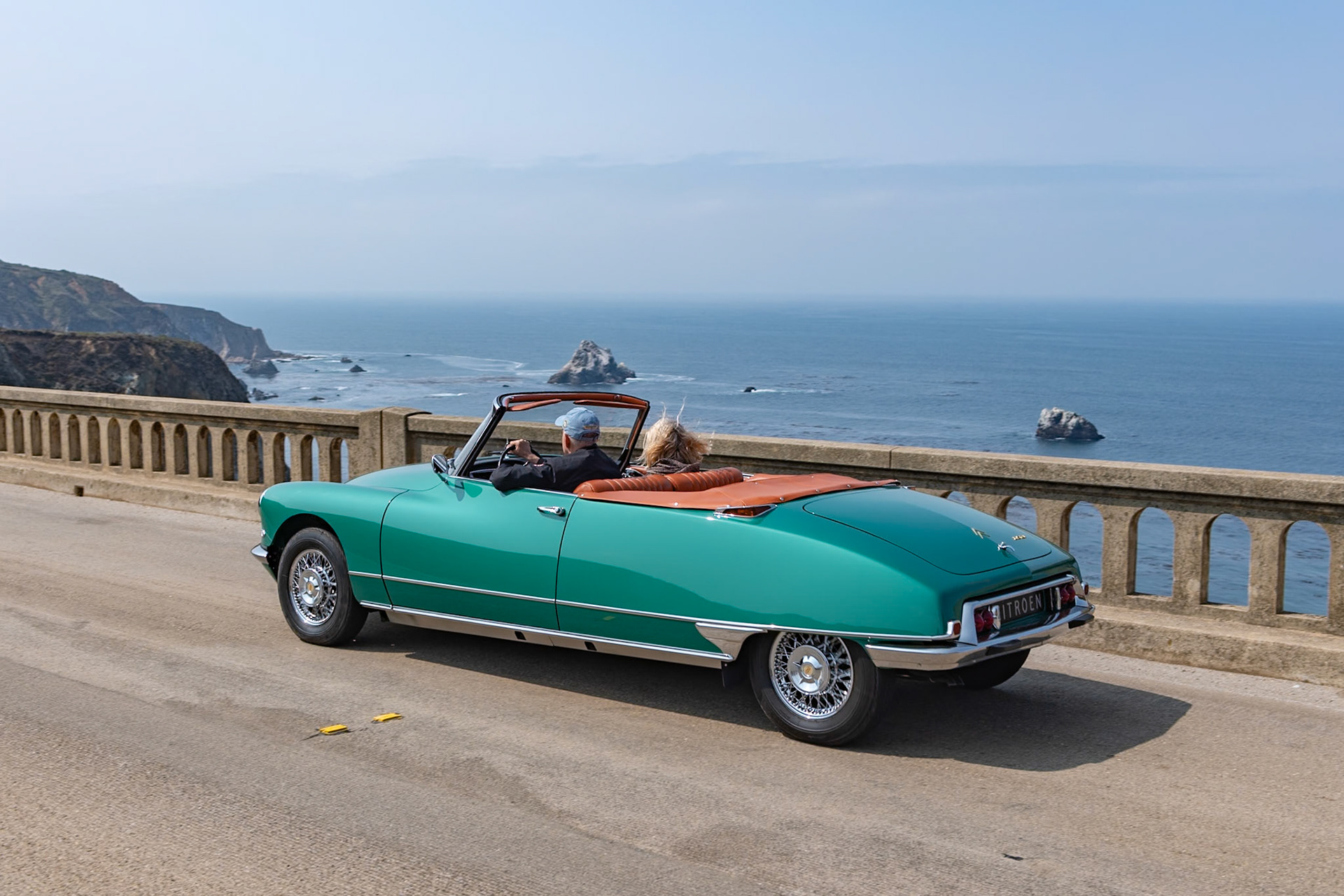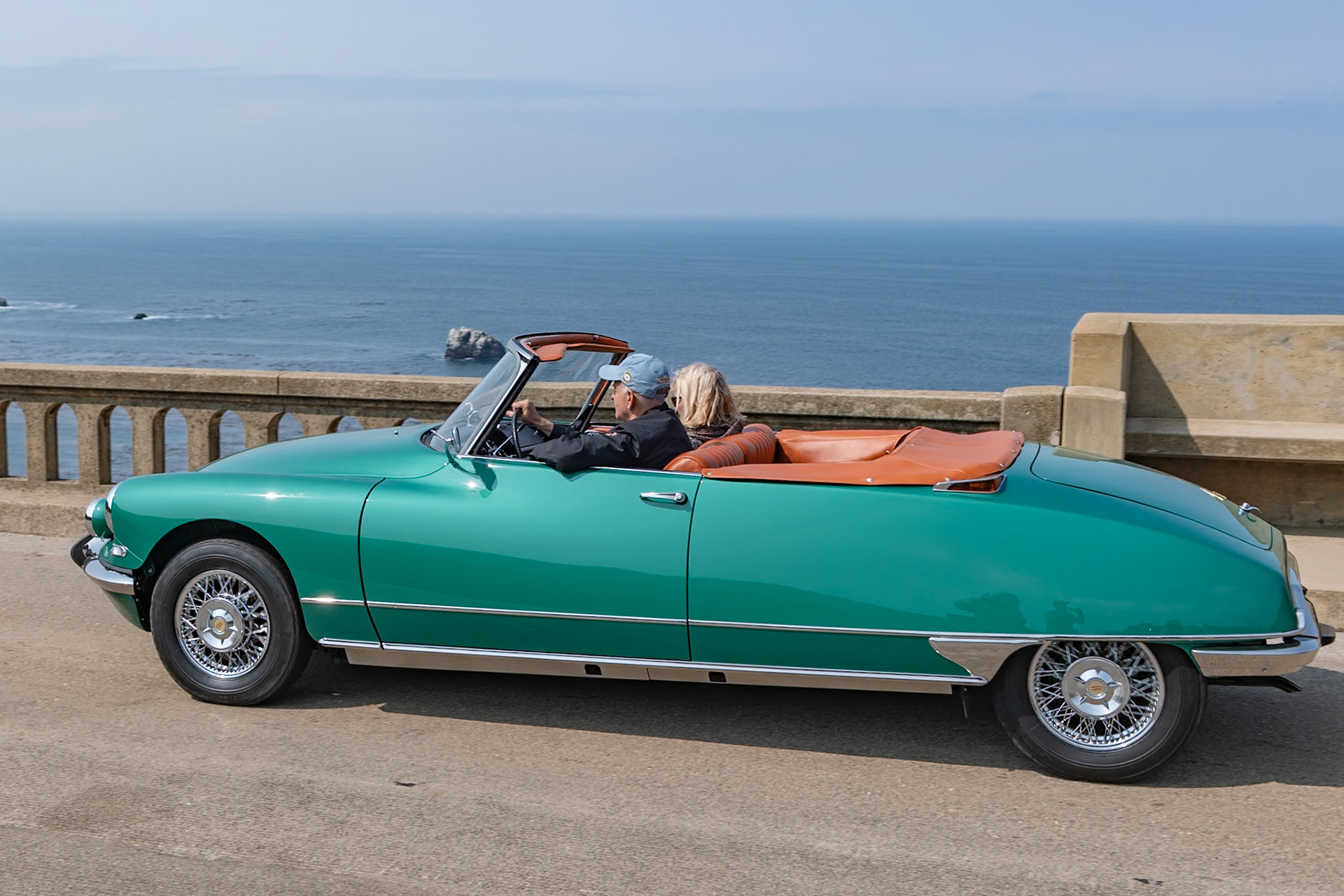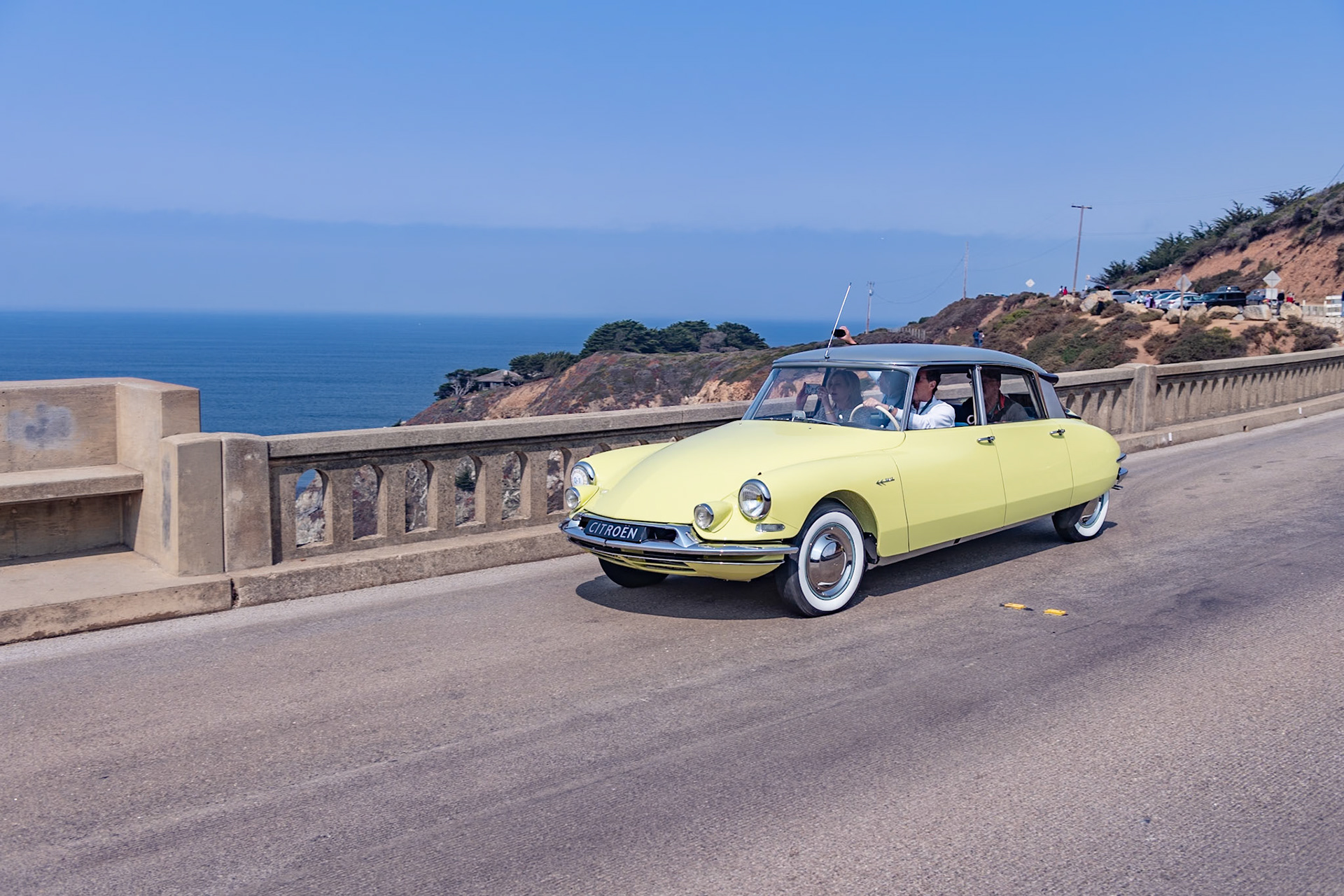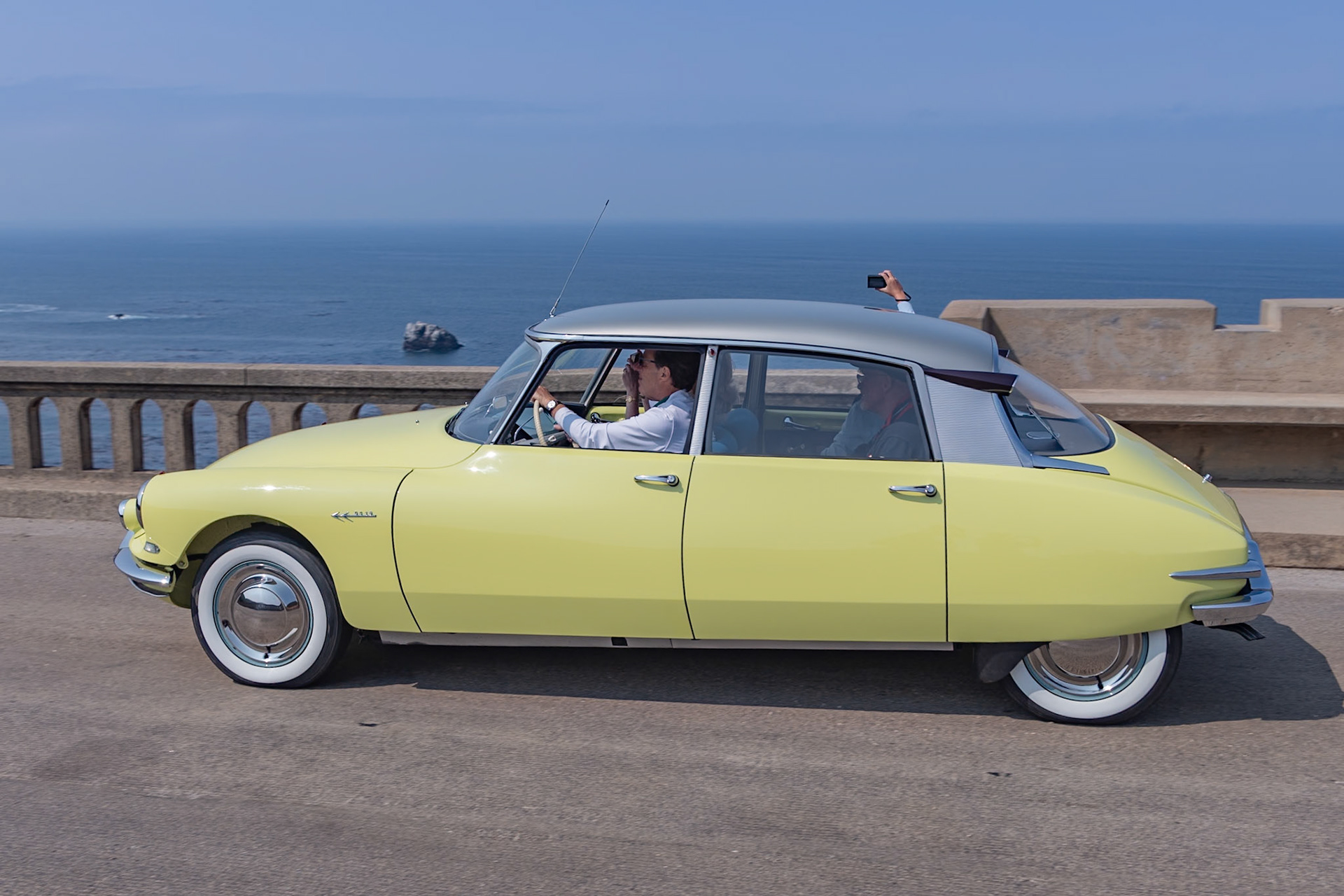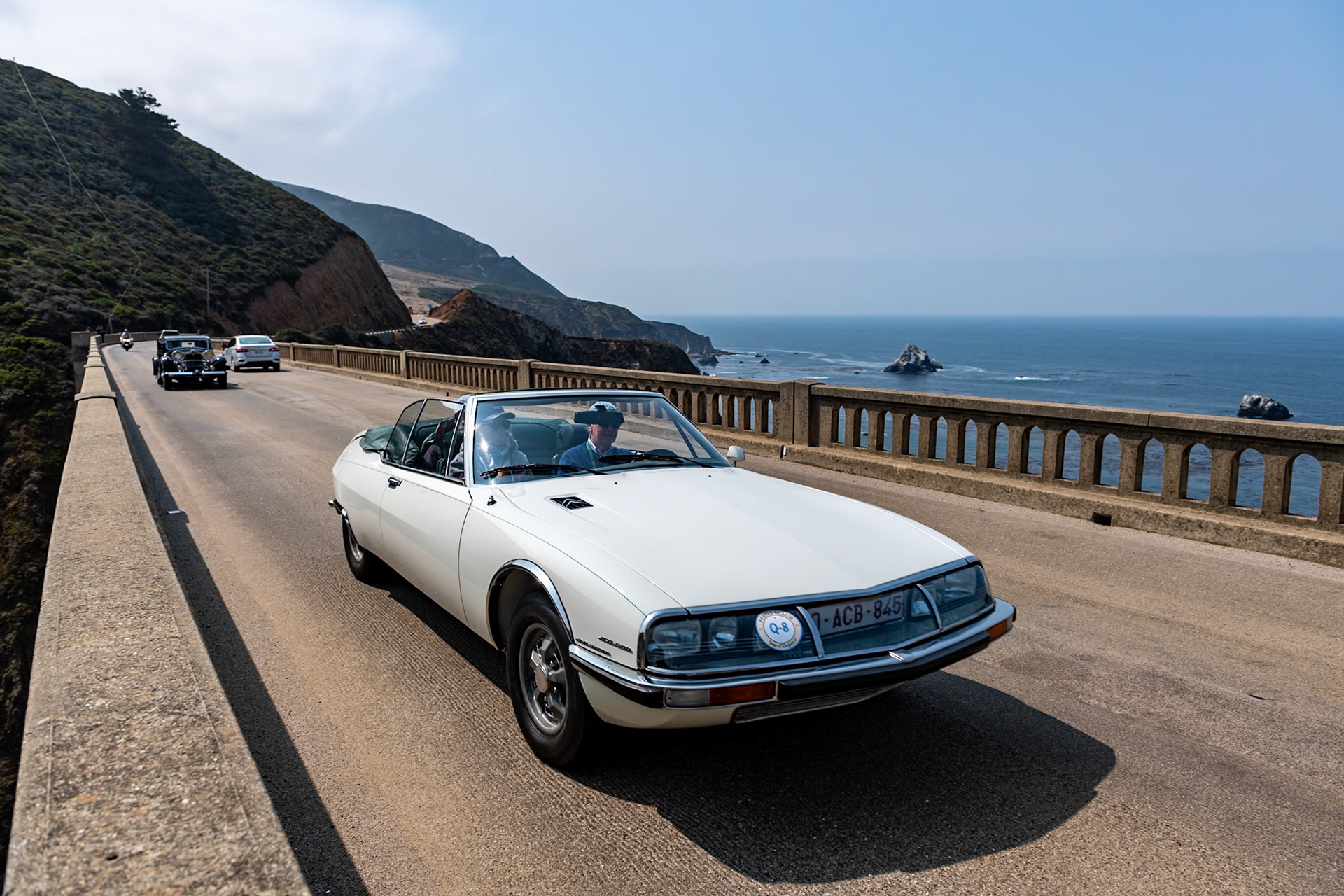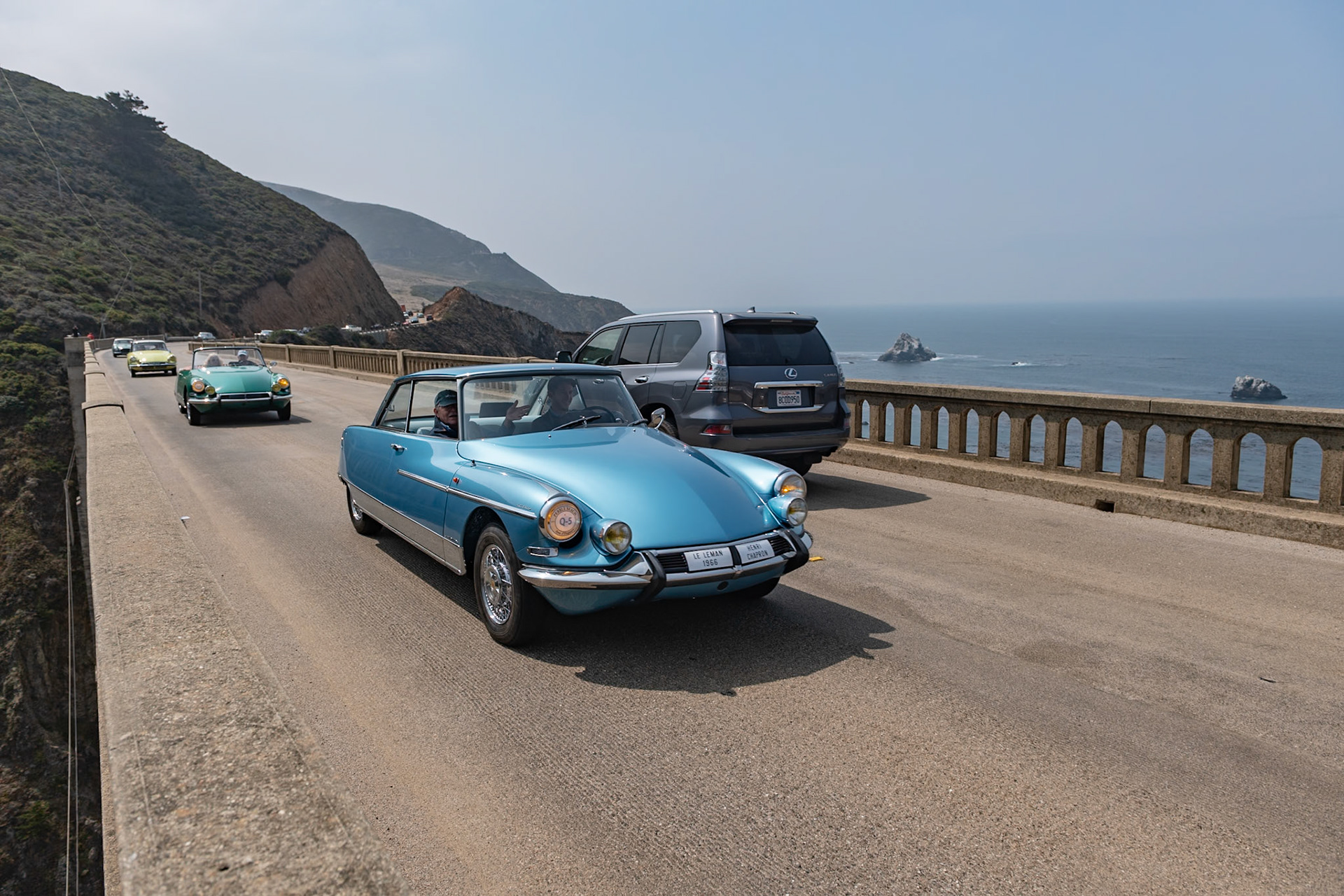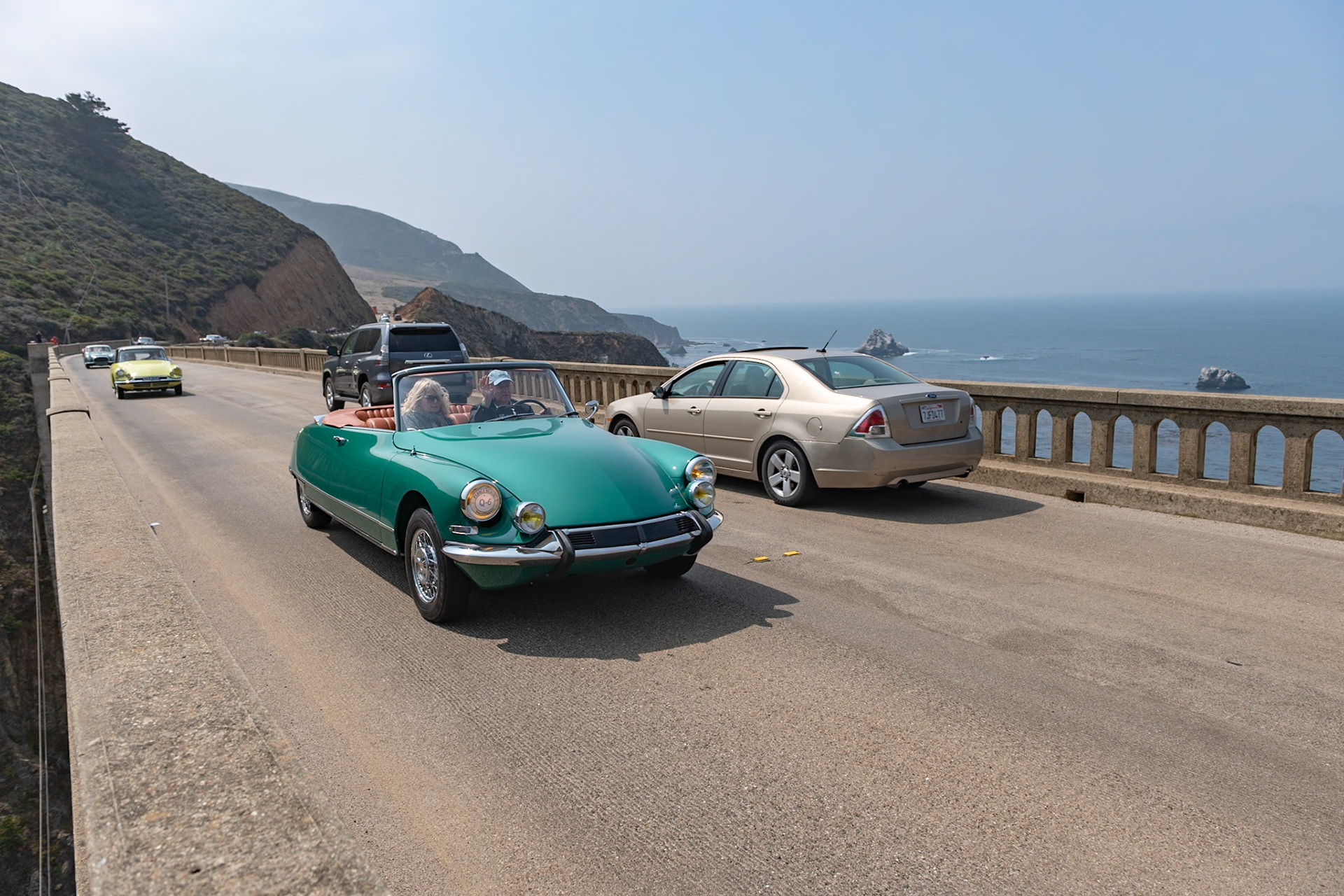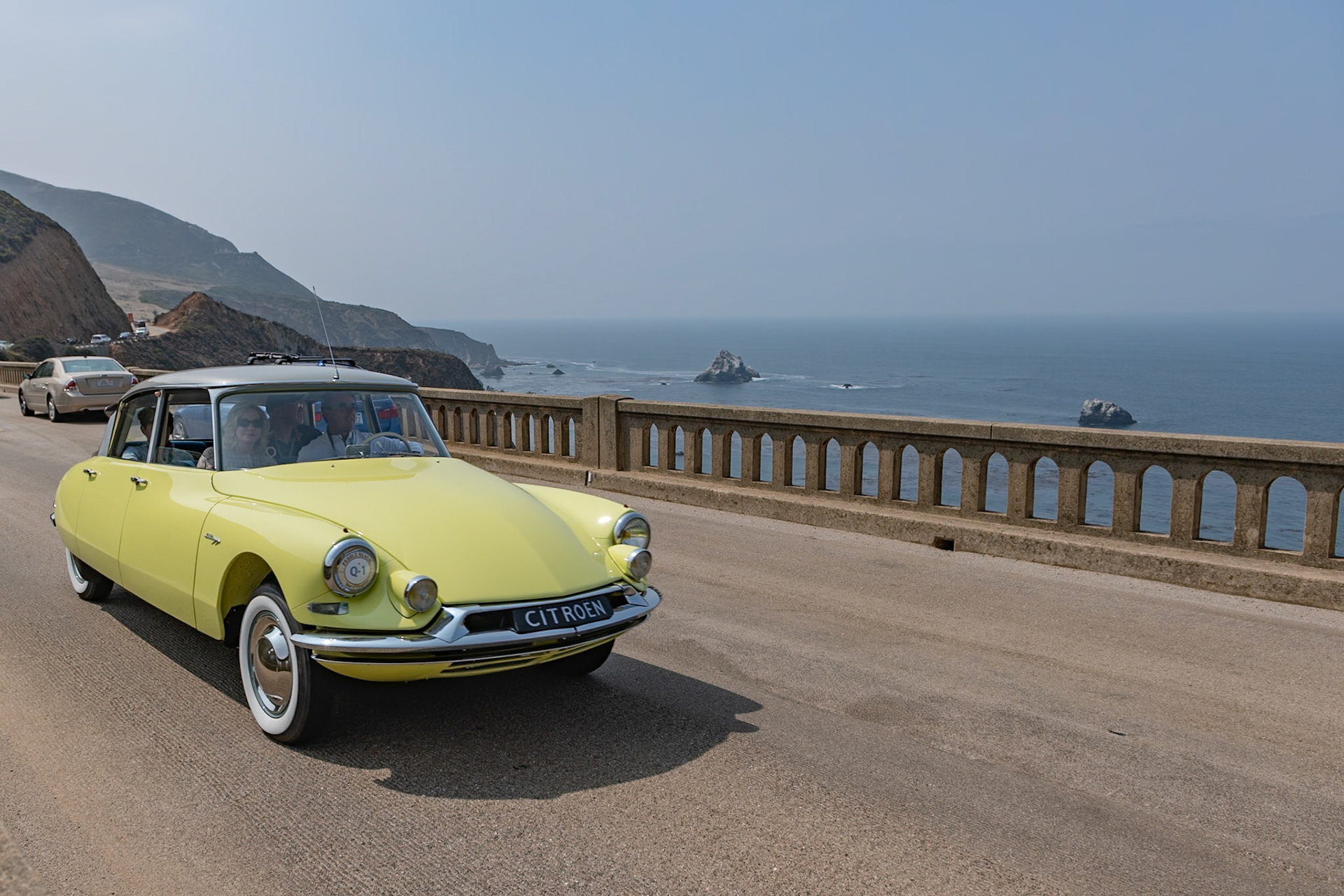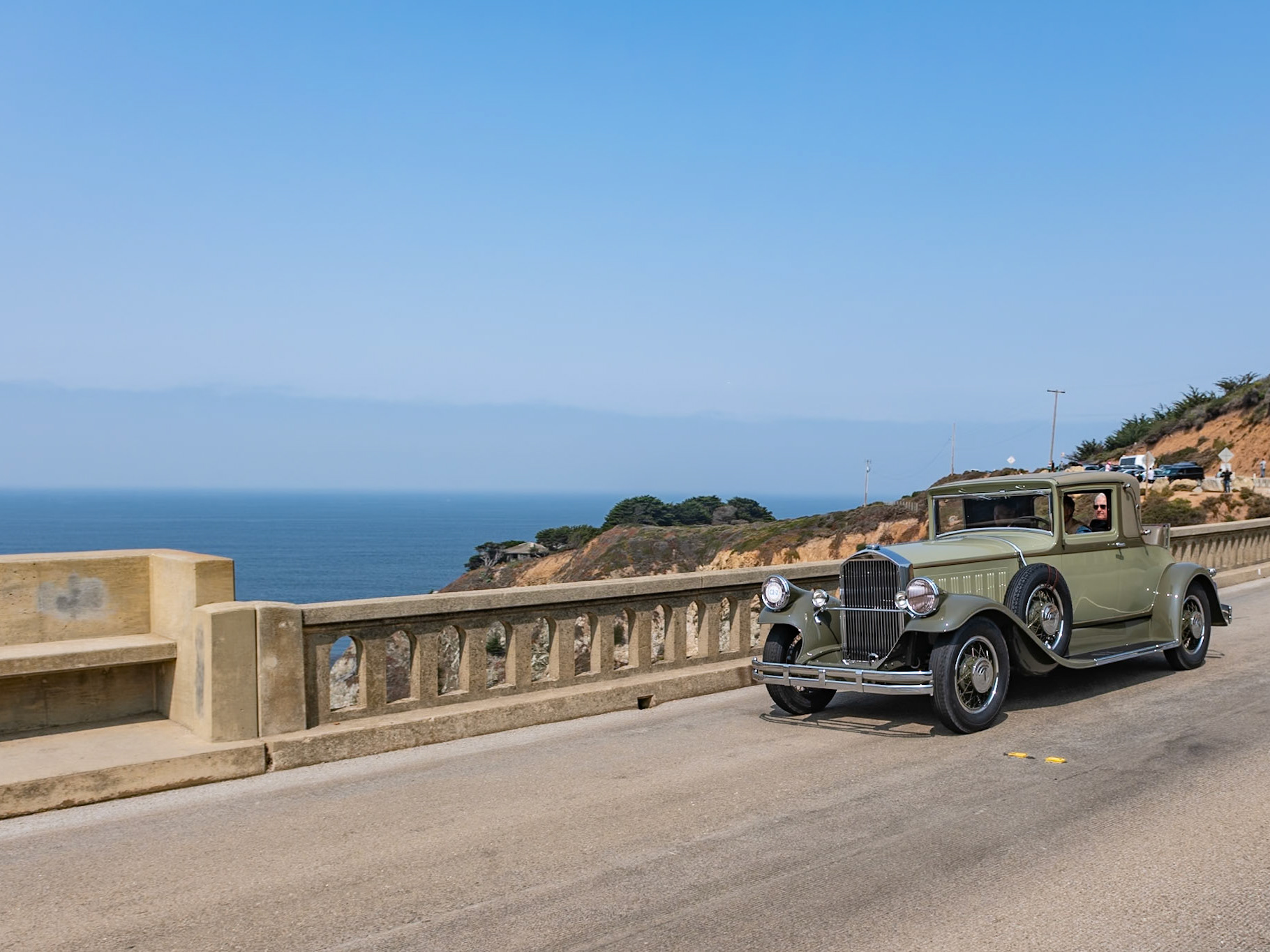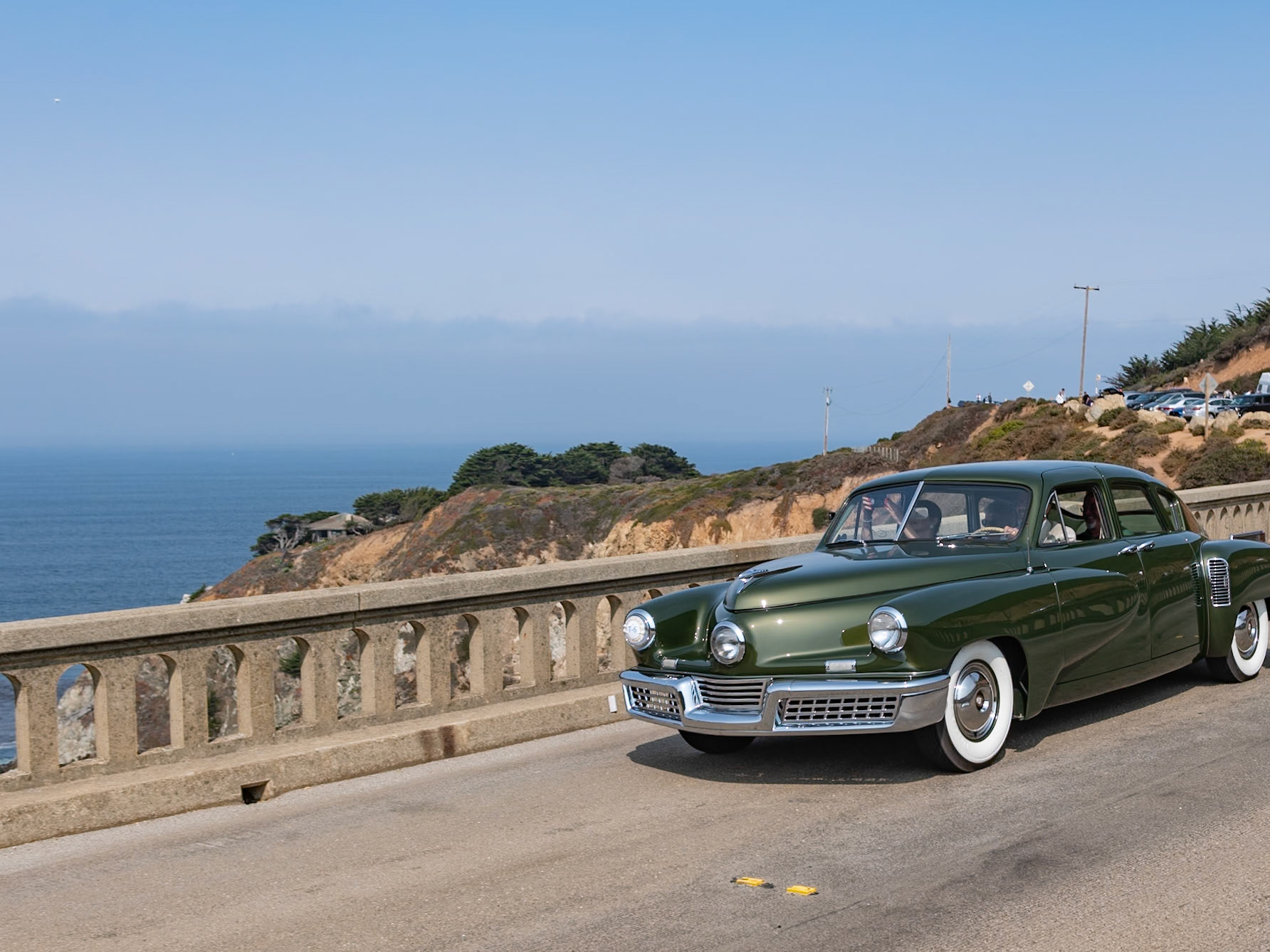
In the wake of the DS 19, Citroen introduced the Citroën DS 21, which had an enlarged 2175 cc 109-hp engine. It was built between 1965 and 1972, before being superseded in 1973 by the DS 23. The Citroën factory offered a variety of different body options for the DS 21, including a 4-door saloon, a 2-door convertible, an estate car called the Safari, and a luxury “Pallas” model. Nonetheless, Henri Chapron continued to build his own versions of Citroëns using this new model. Included in his offerings were around 27 two-door Le Léman Coupés.

In the wake of the DS 19, Citroen introduced the Citroën DS 21, which had an enlarged 2175 cc 109-hp engine. It was built between 1965 and 1972, before being superseded in 1973 by the DS 23. The Citroën factory offered a variety of different body options for the DS 21, including a 4-door saloon, a 2-door convertible, an estate car called the Safari, and a luxury “Pallas” model. Nonetheless, Henri Chapron continued to build his own versions of Citroëns using this new model. Included in his offerings were around 27 two-door Le Léman Coupés.

Because of the relatively small production numbers for the DS Cabriolets, the Citroën factory decided not to adapt its assembly lines to create the open-topped model. Instead, Henri Chapron was subcontracted to carry out the conversions. The factory delivered complete but unfinished DS Saloons, which Chapron then substantially modified and converted into Cabriolets. For this reason, the Cabriolets were nearly double the price of the normal DS Saloon cars. The factory “d’usine” model name was still used even though Chapron assembled nearly all of the Cabriolets. However the cars destined for export, like this car (chassis 4376065), which was destined to go to the United States, were assembled at Citroën’s other factory in Forest, Belgium.

Because of the relatively small production numbers for the DS Cabriolets, the Citroën factory decided not to adapt its assembly lines to create the open-topped model. Instead, Henri Chapron was subcontracted to carry out the conversions. The factory delivered complete but unfinished DS Saloons, which Chapron then substantially modified and converted into Cabriolets. For this reason, the Cabriolets were nearly double the price of the normal DS Saloon cars. The factory “d’usine” model name was still used even though Chapron assembled nearly all of the Cabriolets. However the cars destined for export, like this car (chassis 4376065), which was destined to go to the United States, were assembled at Citroën’s other factory in Forest, Belgium.

Because of the relatively small production numbers for the DS Cabriolets, the Citroën factory decided not to adapt its assembly lines to create the open-topped model. Instead, Henri Chapron was subcontracted to carry out the conversions. The factory delivered complete but unfinished DS Saloons, which Chapron then substantially modified and converted into Cabriolets. For this reason, the Cabriolets were nearly double the price of the normal DS Saloon cars. The factory “d’usine” model name was still used even though Chapron assembled nearly all of the Cabriolets. However the cars destined for export, like this car (chassis 4376065), which was destined to go to the United States, were assembled at Citroën’s other factory in Forest, Belgium.

Citroën was founded in 1919 by André Citroën, and by the late 1920s it was Europe’s largest car manufacturer and had a reputation for fine quality, innovation and revolutionary engineering. The Citroën Traction Avant, launched in 1934, had pioneered mass production with three revolutionary features still in use today: a unitary body with no separate chassis, four-wheel independent suspension, and front-wheel drive. Although its appearance was prewar, its popularity continued for several years after the war. Then, at the 1955 Paris Auto Salon, Citroën launched the new DS 19. Incredibly, over 80,000 cars were ordered during the show. The car’s totally streamlined body made almost every other car seem old, and its innovative chassis and running gear had never before been witnessed. The specification included a 1911 cc engine with a 3 bearing crankshaft developed from the Avant, an innovative high-pressure oil-filled self-leveling suspension, a complex hydraulic brake system, hydraulic steering and an optional hydraulic clutch mated to a semi-automatic gearbox. The first series of the DS19 was built from 1955 until 1962 and remains unique for its pure and timeless design. This car (chassis 57345) is one of the most original first series DS 19 Berlines.

Citroën was founded in 1919 by André Citroën, and by the late 1920s it was Europe’s largest car manufacturer and had a reputation for fine quality, innovation and revolutionary engineering. The Citroën Traction Avant, launched in 1934, had pioneered mass production with three revolutionary features still in use today: a unitary body with no separate chassis, four-wheel independent suspension, and front-wheel drive. Although its appearance was prewar, its popularity continued for several years after the war. Then, at the 1955 Paris Auto Salon, Citroën launched the new DS 19. Incredibly, over 80,000 cars were ordered during the show. The car’s totally streamlined body made almost every other car seem old, and its innovative chassis and running gear had never before been witnessed. The specification included a 1911 cc engine with a 3 bearing crankshaft developed from the Avant, an innovative high-pressure oil-filled self-leveling suspension, a complex hydraulic brake system, hydraulic steering and an optional hydraulic clutch mated to a semi-automatic gearbox. The first series of the DS19 was built from 1955 until 1962 and remains unique for its pure and timeless design. This car (chassis 57345) is one of the most original first series DS 19 Berlines.

The Citroën SM coupé, built by Citroën from 1970 to 1975, was powered by either a 2.7- or 3.0-liter V6 engine, and the factory produced just one body style, a two-door fastback coupé. Because it was a top-of-the-range model, the Citroën SM did inspire several variants by other coachbuilders—but none were built in large numbers. Henri Chapron presented this Citroën SM “Mylord” cabriolet at the Paris Auto Show in 1971. Just seven examples were built at his workshops in Levallois, of which three were exported to the United States. Using the original design for the SM, Chapron chopped the roof, strengthened the body and added a standard rear trunk. This elegant 4-passenger cabriolet cost more than twice the price of the factory SM coupé—and almost as much as a Ferrari Daytona. Alongside the Cabriolets, Henri Chapron built eight 4-door SM Opéra Sedans and a four-door Presidential convertible.

In the wake of the DS 19, Citroen introduced the Citroën DS 21, which had an enlarged 2175 cc 109-hp engine. It was built between 1965 and 1972, before being superseded in 1973 by the DS 23. The Citroën factory offered a variety of different body options for the DS 21, including a 4-door saloon, a 2-door convertible, an estate car called the Safari, and a luxury “Pallas” model. Nonetheless, Henri Chapron continued to build his own versions of Citroëns using this new model. Included in his offerings were around 27 two-door Le Léman Coupés.

Because of the relatively small production numbers for the DS Cabriolets, the Citroën factory decided not to adapt its assembly lines to create the open-topped model. Instead, Henri Chapron was subcontracted to carry out the conversions. The factory delivered complete but unfinished DS Saloons, which Chapron then substantially modified and converted into Cabriolets. For this reason, the Cabriolets were nearly double the price of the normal DS Saloon cars. The factory “d’usine” model name was still used even though Chapron assembled nearly all of the Cabriolets. However the cars destined for export, like this car (chassis 4376065), which was destined to go to the United States, were assembled at Citroën’s other factory in Forest, Belgium.

Citroën was founded in 1919 by André Citroën, and by the late 1920s it was Europe’s largest car manufacturer and had a reputation for fine quality, innovation and revolutionary engineering. The Citroën Traction Avant, launched in 1934, had pioneered mass production with three revolutionary features still in use today: a unitary body with no separate chassis, four-wheel independent suspension, and front-wheel drive. Although its appearance was prewar, its popularity continued for several years after the war. Then, at the 1955 Paris Auto Salon, Citroën launched the new DS 19. Incredibly, over 80,000 cars were ordered during the show. The car’s totally streamlined body made almost every other car seem old, and its innovative chassis and running gear had never before been witnessed. The specification included a 1911 cc engine with a 3 bearing crankshaft developed from the Avant, an innovative high-pressure oil-filled self-leveling suspension, a complex hydraulic brake system, hydraulic steering and an optional hydraulic clutch mated to a semi-automatic gearbox. The first series of the DS19 was built from 1955 until 1962 and remains unique for its pure and timeless design. This car (chassis 57345) is one of the most original first series DS 19 Berlines.



